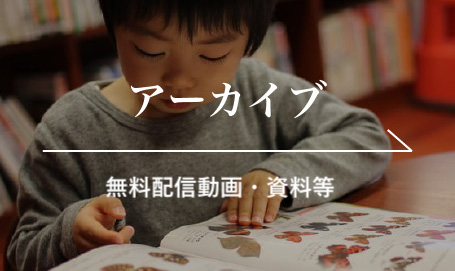< VOLUME 48, No.2 >
Iino Yuki. A Study of the 20 Hours Free Early Childhood Education Policy in New Zealand : Focusing on the Clark Government of the Labour Party from 1999 to 2008.
Research on Early Childhood Care and Education in Japan, 2010, 48(2), 112-122.
In 2007 the Labour-led coalition government in New Zealand introduced a provision of 20 hours free early childhood education in teacher-led services for all 3- and 4-year-old children. This policy was linked to the goal of increasing participation in the government’s strategic plan for early childhood education (Pathways to the Future), by removing cost as a barrier to children’s participation in approved services. This article outlines the context which was developed in the Clark Government from 1999 to 2008 by discussing the contents of “Pathways to the Future”, and the controversy over the exclusion of private services and parent/whanau-led services, and the wedge issues. Through the analysis, this article attempts to find out the contemporary subject of this policy.
Keywords: early childhood education and care, 20 hours free program, strategic plan, Clark Government, New Zealand
—————–
Fujii Maki. A Consideration on the Significance of a Participatory Observer among Nursery School Children : Focusing on the Unintended Message of a Girl to the Observer.
Research on Early Childhood Care and Education in Japan, 2010, 48(2), 123-132.
The purpose of this study is to consider meanings of a participatory observer’s existence to children in nursery school through analyzing an impressive episode from the author’s experiences there. The analysis first shows that a participatory observer appears before children not just as a person observing them but as a concrete person who gives them a possibility of building up an intersubjective relationship. Secondly it deals with the finding that it is not until an observer has developed an actual relationship of “the self” and “the other” with children that we can truly understand the child’s subjective world. These considerations suggest that the participatory observation is the method that urges an observer to respond to practical matters in the nursery school setting.
Keywords: meanings of participatory observer’s existence, concrete another person, actual relationship of “the self” and “the other”, subjective world
—————–
Sugita Yasuko. Monthly Newsletters on a Child with a Disability : A Day-Care Center’s Effort in Facilitating Early Childhood Mainstreaming.
Research on Early Childhood Care and Education in Japan, 2010, 48(2), 133-144.
On the subject of bringing up children with disabilities in day-care centers, most students and practitioners have focused on support for the children and their parents. Almost equally important is trying to help others in the day-care center environment to shed their prejudice against disabilities. This paper introduces a day-care center nurse who circulated a monthly newsletter on a child with a disability and his interactions with other children. The readers, her colleagues and parents of children without disabilities, began to develop a new perspective on the richness of the interaction among the children in the integrated day-care center. Conveying the significance of early childhood mainstreaming to the readers would be an important next step, which could hopefully result in the readers’ greater sensitivities for, and wider interactions with people with disabilities.
Keywords: children with disabilities in day-care centers, integrated day-care centers, early childhood mainstreaming, monthly newsletters on a child with a disability, prejudice against disabilities
—————–
Katayama Mika. Research on Preschool Teachers’ Awareness of the Care of Children with Chronic Diseases.
Research on Early Childhood Care and Education in Japan, 2010, 48(2), 145-156.
More than 80% of preschool teachers who participated in this study were in charge of children with chronic diseases. Common diseases included food allergy, atopic dermatitis, and asthma. Each preschool teacher mostly understood the children’s symptoms and precautions. It was clarified that about 40% of teachers were anxious about physical management, such as emergency responses, or whether or not they sufficiently understood the procedures necessary for childcare. However, it became clear that there was no direct liaison with medical institutions, and that teachers were cooperating with medical institutions via guardians. The teachers thought that they were mostly able to cooperate with guardians, but at the same time some had difficulties with guardians who were complacent about their children. In the future, it will be necessary to care for children by sharing common understanding about child development with guardians.
Keywords: chronic disease, infant, preschool teacher, childcare, cooperation
—————–
Seno Yui. How do 2- to 3-Year-Olds Create Shared Themes in Play? : Longitudinal Observation of Reciprocal Imitation and Its Change over Time.
Research on Early Childhood Care and Education in Japan, 2010, 48(2), 157-168.
In this study, we observed 2- to 3-year-olds at play in a nursery school over a six-month period and investigated how they create shared themes. We found that shared themes varied gradually over a period of time. In the first three months, the shared theme was characterized as “reciprocal imitation”. In reciprocal imitation, children can feel “sameness” and make contact with one another by behaving in a similar way and with similar objects to their peers. After the initial three months, the children enjoyed the “make-believe theme” by uttering the introduction of make-believe play. Although their make-believe play depended on a routine (or format) at the beginning, they were eventually able to share goals and cooperate with one another in the absence of routine.
Keywords: 2 – to 3 -year- olds, play, shared theme, reciprocal imitation, make-believe play
—————–
Kousokabe Taku. The Meaning of Children’s “Head Turn” in Play : A Case Study of 3-Years-Old Children who Progress from “Head Turn” to Interaction in Sand Play.
Research on Early Childhood Care and Education in Japan, 2010, 48(2), 169-172.
The purpose of this study is to clarify that a 3-years-old child’s head turns during play and that there is a process in which this “Head Turn” leads to interaction with peers. An analysis of the meaning of children’s “Head Turn” in play is also included showing that 1) there are four factors for “Head Turn”, and 2) the highest frequency of “Head Turn” is when the 3-years-old child engages in solitary sand play. During play there is a mutual head turn which initiates non-verbal approval of interaction, then progresses to approach, negotiations, and imitation in play and ultimately to elaborate interaction. I suggest that children’s “Head Turn” is a useful measure for teachers to guess the consciousness of children during play.
Keywords: “Head Turn”, interaction, 3 -years-old, play with sand, sharing the space
—————–
Suzuki Sachiko, Iwatate Kyoko. The Dynamic Process of the Emergence of Routine in the ‘Good-Bye’ Greeting Time : A Case Study of 3-Year-Old Children in a Kindergarten.
Research on Early Childhood Care and Education in Japan, 2010, 48(2), 180-191.
This study analyzes the dynamic process of how 3-year-old children learn the ‘good-bye’ greeting routine during the daily good-bye assembly at kindergarten. The analysis is based on the observation and detailed record of interaction between the teacher and the children as well as interaction among the children. The results show that children initially sought their own pleasure and did not follow the routine, however, overtime as they became fond of “acting together” with peers, they followed the routine. Teachers encouraged children to follow the routine by reducing time between routine elements. Then gradually, children started to encourage each other to follow the routine. It is considered that in order for children to spontaneously learn the routine, it is important for them to influence each other, while teacher-child attachment is necessary as a basic foundation.
Keywords: 3 -year-old children, the ‘good-bye’ greeting routine, the dynamic process on learning, emotion, teacher-child relationship
—————–
Kamiya Tetsuji. A Longitudinal Study of Pre-School-Teacher-Efficacy in a Case of Junior College Early Childhood Education Majors with a Focus on the Motivation of College Admission.
Research on Early Childhood Care and Education in Japan, 2010, 48(2), 192-201.
This paper clarifies that depending on the students’ motivation and reasons for admission as early childhood education majors, their pre-school-teacher-efficacy during junior college showed various tendencies and changes. A study was carried out in which 214 female participants in a junior college rated questionnaires at four different times during their 2 year college term. Results show that motivation was correlated with pre-school-teacher-efficacy during the first year, but not during the second year. The reasons of admission were classified into four types; (a) students with active attitudes, (b) students with recognition of social value, (c) students with passive attitudes, (d) students with self-interests. The students with active attitudes showed a high consistency of pre-school-teacher-efficacy, while the students with passive attitudes declined in their efficacy from the beginning until their graduation. These results suggest that consecutive supports such as career guidance are necessary for the students.
Keywords: career development, nursery teachers training, motivation of admission
—————–
Tanigawa Natsumi. Students’ Cognition Change on Early Childhood Care and Education through Reality Shock in their Student Teaching at Kindergarten.
Research on Early Childhood Care and Education in Japan, 2010, 48(2), 202-212.
The purpose of this study is to examine the reality shock that students experienced in their student teaching at kindergarten, and to explore their cognition change on early childhood care and education by interviewing nine students. The result of analysis shows two different types of changing process through their reality shock; 1) Students who built positive relationships with their cooperating teachers can focus on deepening their understanding of children, 2) Students who make negative relationships with the teachers focus on relieving their shock and thus lose motivation.
Keywords: nursery school and kindergarten teacher training, student teaching at kindergarten, reality shock, cognition change
—————–
Adachi Satomi, Shibasaki Masayuki. Analysis of “Swaying” and Structure of Reformation in the Process of Obtaining a Nursery and Kindergarten Teacher Identity : With a Focus on Classroom Teachers.
Research on Early Childhood Care and Education in Japan, 2010, 48(2), 213-224.
The purpose of this study is to examine the various kinds of problems and despair that cause teachers to sway in their identity as nursery and kindergarten teachers. In this study, we conducted interviews with a total of 24 nursery and kindergarten teachers according to their teacher experiences and positions and analyzed them using SCQRM. As a result, it was found that nursery and kindergarten teachers experience various problems and despair (which cause swaying) in accordance with their growth. In addition, it became clear that the teachers’ surrounding work environments, such as the existence of important others with whom they can consult, play a significant role in solving their problems and despair.
Keywords: nursery and kindergarten teacher identity, growth process, swaying, important others
—————–
Tezuka Takako. An Analysis of Public Financing for an Unified Institution of Kindergarten and Nursery School in Underpopulated Areas : A Case Study of Shirahamayoujien in the Town of Shirahama, Wakayama Prefecture.
Research on Early Childhood Care and Education in Japan, 2010, 48(2), 225-236.
The purpose of this paper is to analyze public financing in the unified institutions of kindergarten and nursery school in underpopulated areas. A case study was conducted in Shirahamayoujien in the town of Shirahama, Wakayama Prefecture. Shirahama Town is an underpopulated area, and thus is eligible for financial assistance programs run by the national government. The town quickly responded to the policy of unification of kindergarten and nursery school, founding a unified institution, which employs many temporary employees, and realized cost cuts. The chief administrator of the institution manages its finance, and is responsible in dealing with financial difficulties. The allocated tax to the local government from the national government is an important source of revenue in the unification of kindergarten and nursery school. The local allocation tax provides 19.0% of the kindergarten budget and 18.2% of the nursery school budget. In order to eliminate the gap among municipal governments, the national government should secure finance for unified institutions in order to keep quality education and care for future children.
Keywords: Unification of kindergarten and nursery school, Underpopulated areas, Public finance analysis, Local allocation tax, Sectionalism of departments
—————–









